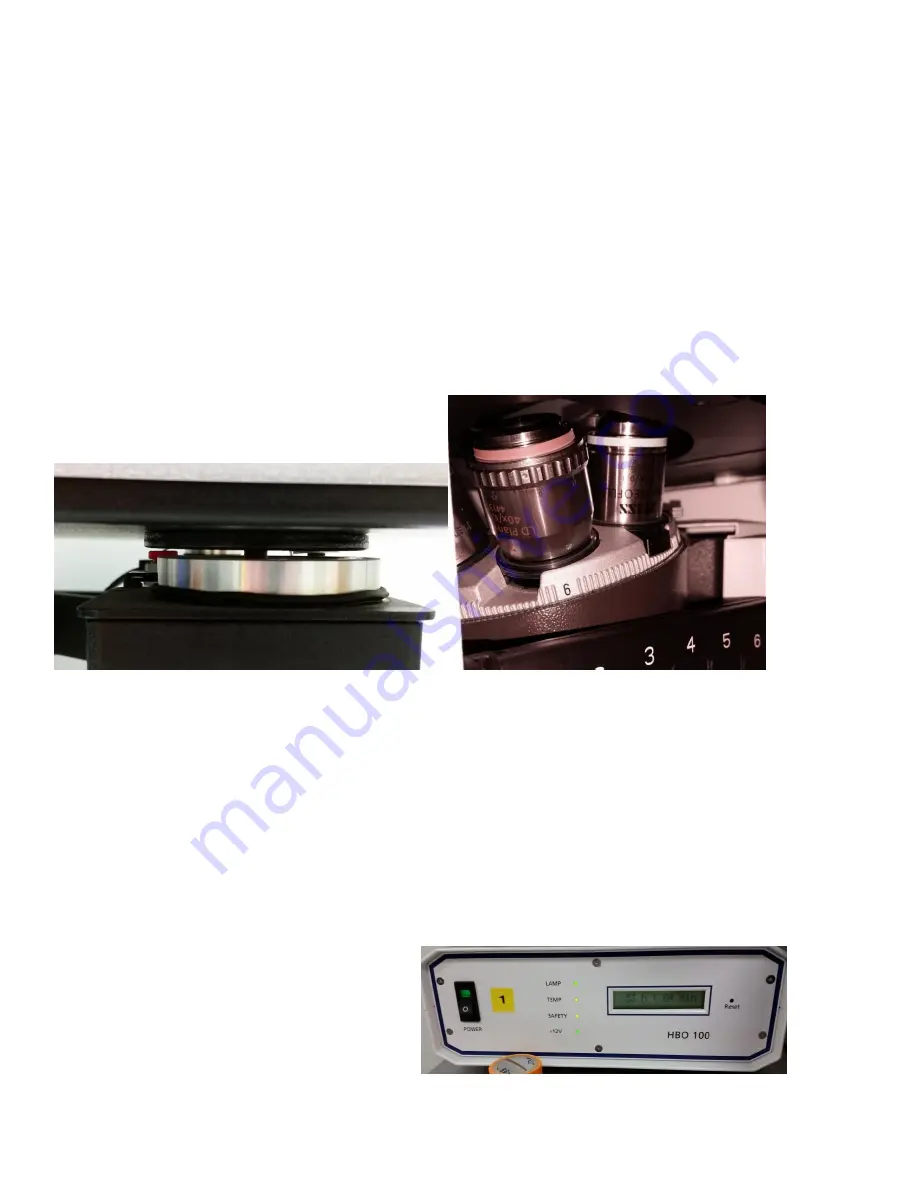
RCF Microscopy Manual
5/2/2017
Authors Cory Nook and Chaowei Shang
Page 3 of 19
If the room lights are not on when you arrive to use the Axioobserver, DO NOT TURN THEM ON. Please be courteous of
those using the other microscopes, since they may have light-sensitive slides, dishes, or plates on the microscope stages,
which could be damaged by the room lights. This is particularly the case with the Leica confocal, since some Z stacks can
take over half an hour to complete. Use a torch if needed.
Check whether the floating stage is functional. If not, please contact the Research Associate. Make sure the
table is clean. No food or water is allowed in the microscope room. Carefully take off the microscope cover
and put it in the white storage cabinet. Check whether the holder is properly in place.
Please check the objective turret has the 10x objective in place. This is a safety precaution. If the 10x objective
is not in place, please clean the current objective and manually switch it to the 10x objective. To manually
switch objectives, push on the teeth of the objective turret in either a clockwise or counter clockwise fashion
as shown adjacently in the boxed region.
1.
START UP THE SYSTEM
Please sign in on the login sheet. The format for the date is MM/DD/YYYY, eg. 05/25/2015. Write legibly for
this is how the staff knows who has been using the microscope. Check in and Check out time is written in 24
hour format, e.g. 1pm is 13. The format for writing the bulb time is ###h ## m, eg. 100h 25m. (You will not be
able to write the bulb time until you turn on the power supply.)
Our system has the startup labeled
numerically with yellow stickers.
First, turn on the mercury lamp power source.
The green power light and the green lamp
light will come on. (This is where you record
the bulb time.) If the lamp light indicator does
not light up, please contact Core facility staff.


















